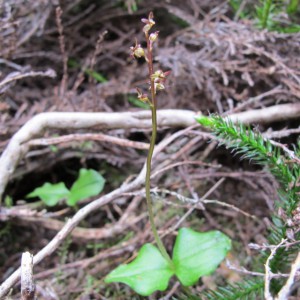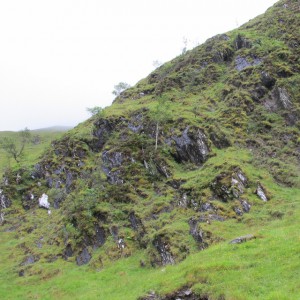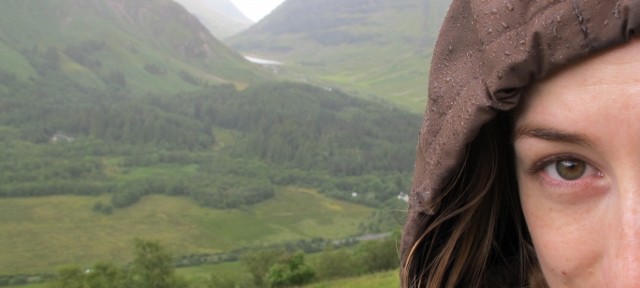
This blog comes courtesy of once-Hurricane Bertha. The current spate of bad weather means that I currently can’t get out onto the hills, leaving me with time to briefly reflect on some highlights of the past few months. Every cloud…
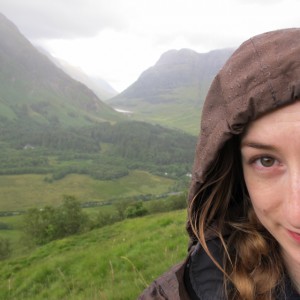
Survey selfie (who says ecologists aren’t cool?)! Some wind and rain is normal during fieldwork in the mountains, but current conditions are prohibitive to mushroom hunting.
The spring fungi came and went. Those much-prized ephemeral edibles, the morels and St Georges Mushrooms, were predictably found way back in April and May. In the good company of the Fungus Group of South East Scotland and with the Clyde and Argyll Fungus Group, I happily enjoyed forays during the brief seasonal peak in fruiting.
Then there were the flowers, and they never disappoint. I was able to revisit and re-appreciate some of the species that I first met last year as a brand new apprentice. I again learned plenty on the annual NTS wildflower course, this time under June sunshine on the East Neuk of Fife. I also assisted with plant surveys at House of the Binns and at Grey Mare’s Tail.
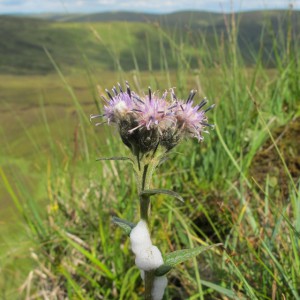
Alpine Saw-wort, Saussurea alpina, is one of the species resurveyed this summer at Grey Mare’s Tail.
The BSBI held it’s Annual Summer Meeting this year in Perthshire. This began in Birnam with a fascinating day of talks which included ‘The rare plants of Perthshire’ – a Top 10 by Martin Robinson – and an interesting presentation about the work of iCONIC, a local conifer conservation project with a big international ambition. Of course, there was the inevitable nod to the Ben Lawers NNR as a premier botanical site. The NTS ecologist Dan Watson spoke about 30 years of monitoring at this ‘Botanist’s Mecca’, and mused on the difficulty of accurately surveying plants that grow in precipitous places.
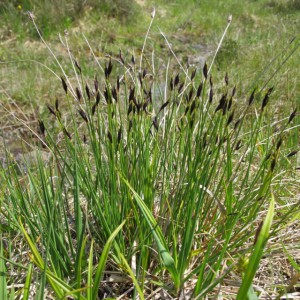
Ben Vrackie, though a popular hill just outside of Pitlochry, hosts some botanical rarities. The Brown Bog-Rush, Schoenus ferrugineus, is one that I was fortunate to see during the BSBI meeting. It was once thought to be extinct in Scotland after the loss, in 1950, from its only known site at Loch Tummel. Transplanted populations were found to have survived at Ben Vrackie, and since then it has been discovered at just a few other localities.
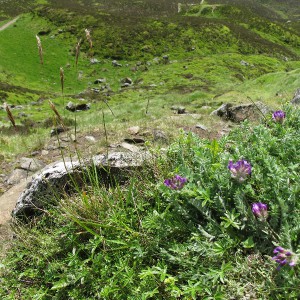
The Purple Oxytropis, Oxytropis halleri, is another Ben Vrackie speciality and is pictured here clinging to a crag. Also to be seen is the crumbling path below the plant – it is a sad irony that we botanists contribute to erosion in search of plants we wish to protect.
I’ve also spent time with various enthusiastic bands of bryologists. First, on the west coast where we got acquainted with the classic oceanic species in the woods and ravines that simply dripped with bryophytes and lichens too. I’ve joined some Dumfriesshire recorders out in the Moffat hills and, most recently, I visited these hardy folk on their meeting to the Ben Lawers area, where they spent a week indulging in the rarities occurring there.
As I say goodbye to Scotland’s summer, I know there’s a lot of work still to do. It’s time now to usher in the kingdom of fungi, and a storm of a different kind!
Glencoe is one of the locations for much of my remaining project work, as here grows the plant named Mountain Avens, Dryas octopetala. As you know, the uplands are harsh places to live and grow, and some fungi act as an extended root network in the soil, helping plants to gain the nutrients they need to survive. D. octopetala is a species known to require this sort of mycorrhizal (translation: fungus-root) relationship, but there are very few records of its associated fungi in Scotland. I believe there are a number of reasons for this, such as: the restricted distribution of this plant; the problems associated with surveying in its habitat; and the preference for woodland forays by mycologists, which are themselves few in number.
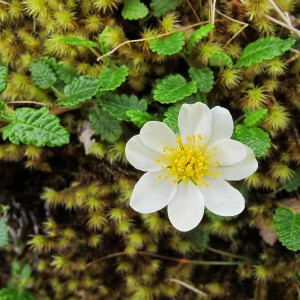
The pretty flowers of Dryas octopetala aren’t always 8-petalled as the name suggests. It flowered back in June, but not for very long.
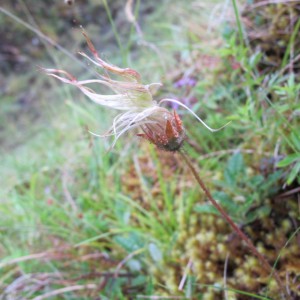
The beautiful and characteristic twisted seed heads of D. octopetala. These were all that were left of the flowers by July.
I am currently targeting populations of D. octopetala on NTS properties, hoping to find mushrooms growing amongst its sculpted, sprawling leaves. I have also gained permission from SNH to dig, quite literally, a little deeper. Soon, I will also take root samples from the plant in order to determine which fungi are present below the ground, but were not encountered as fruit bodies. Though I don’t have much more time as an apprentice, I hope to build on the existing knowledge of arctic-alpine fungal communities, which is so very limited and largely unexplored.
Wish me luck.

